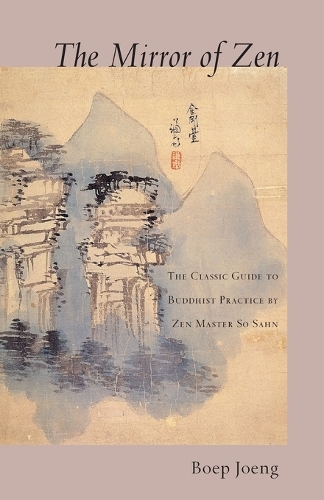
The Mirror of Zen: The Classic Guide to Buddhist Practice by Zen Master So Sahn
(Paperback)
Publishing Details
The Mirror of Zen: The Classic Guide to Buddhist Practice by Zen Master So Sahn
By (Author) Boep Joeng
Translated by Hyon Gak
Edited by Zen Master So Sahn
Shambhala Publications Inc
Shambhala Publications Inc
15th February 2007
United States
Classifications
General
Non Fiction
294.3927
Physical Properties
Paperback
186
Width 140mm, Height 216mm, Spine 9mm
238g
Description
Zen Master So Sahn (1520-1604) is a towering figure in the history of Korean Zen. In this treasure-text, he presents in simple yet beautiful language the core principles and teachings of Zen. Zen Master So Sahn (1520-1604) is a towering figure in the history of Korean Zen. In this treasure-text, he presents in simple yet beautiful language the core principles and teachings of Zen. Each section opens with a quotation - drawn from classical scriptures, teachings, and anecdotes - followed by the author's commentary and verse. Originally written in Chinese, the text was translated into Korean in the mid-twentieth century by the celebrated Korean monk Boep Joeng. An American Zen monk, Hyon Gak, has translated it into English.
Author Bio
Boep Joeng is a Korean Zen monk, a writer, and a translator of Buddhist texts. In his native Korea, he has written widely about meditation, social justice, environmentalism, and nonmaterialism.
Hyon Gak Sunim, a Zen monk, was born Paul Muenzen in Rahway, New Jersey. Educated at Yale College and Harvard University, he was ordained a monk under Zen Master Seung Sahn in 1992 at Nam Hwa Sah Temple, the temple of the Sixth Patriarch, Guangzhou, Peoples Republic of China. He has completed more than twenty intensive ninety-day meditation retreats and three arduous hundred-day solo meditation retreats in the mountains of Korea. He has compiled and edited a number of Zen Master Seung Sahns texts, includingThe Compass of Zen,Only Dont Know,andWanting Enlightenment Is a Big Mistake.He receivedingafrom Zen Master Seung Sahn in 2001, and is currently guiding teacher of the Seoul International Zen Center at Hwa Gye Sah Temple, Seoul.
Zen Master So Sahn was born in what is now North Korea. He became a monk at age twenty-one, and later assumed leadership positions in both major schools of Korean Buddhism. At the end of the sixteenth century he helped his country repel a Japanese invasion by training and leading a monk army, making him a national hero and a household name in Korea even into modern times.
